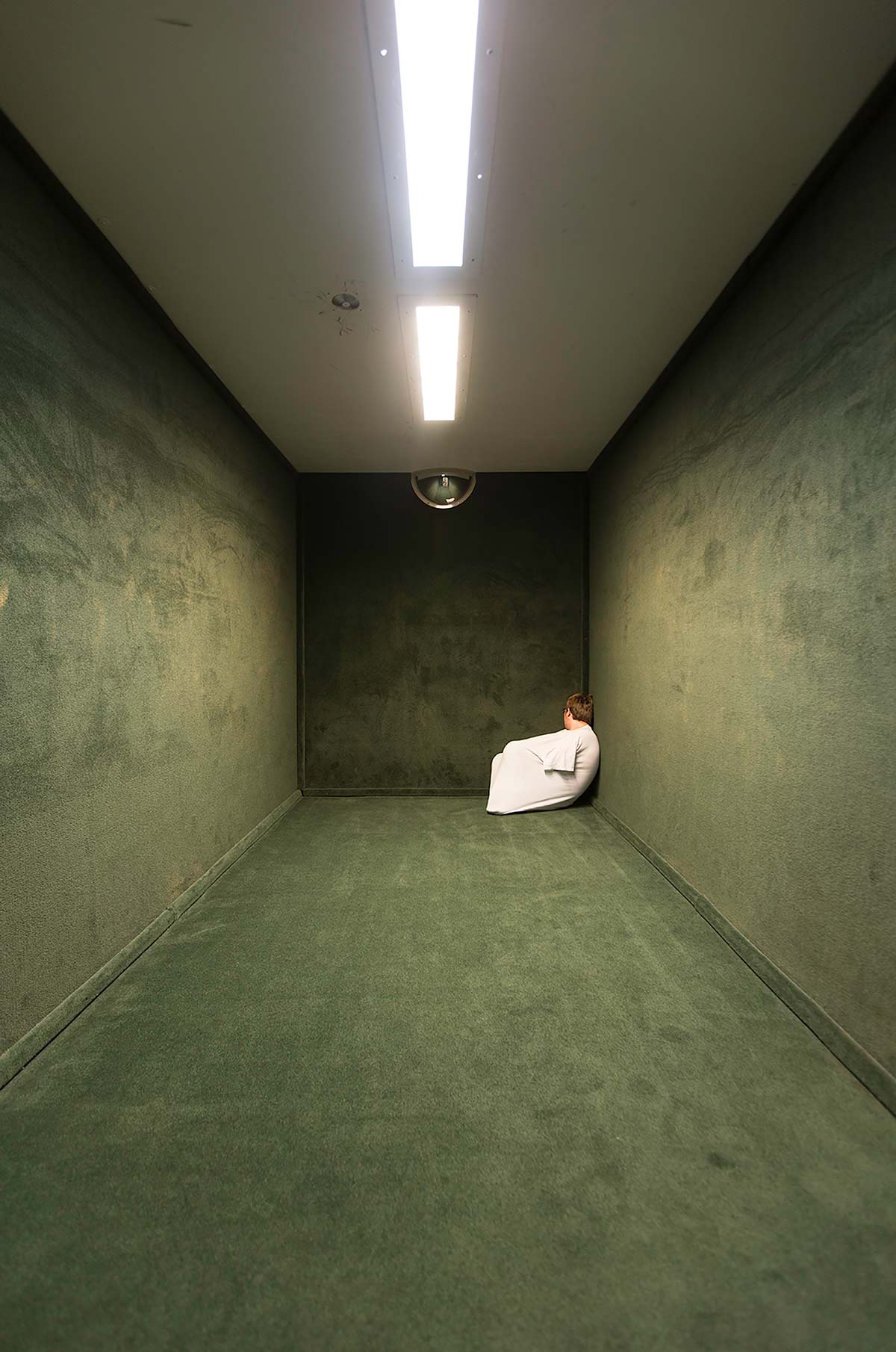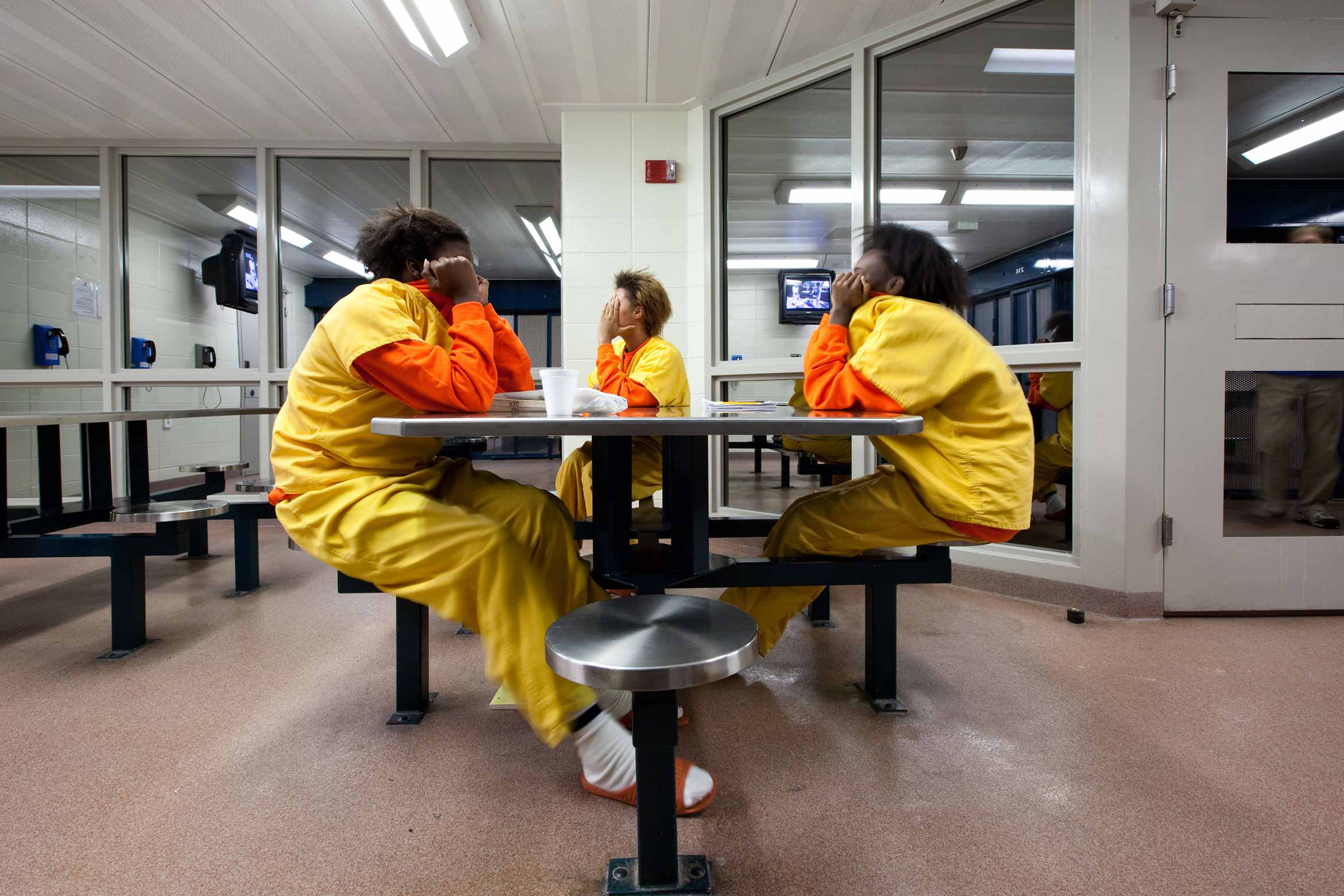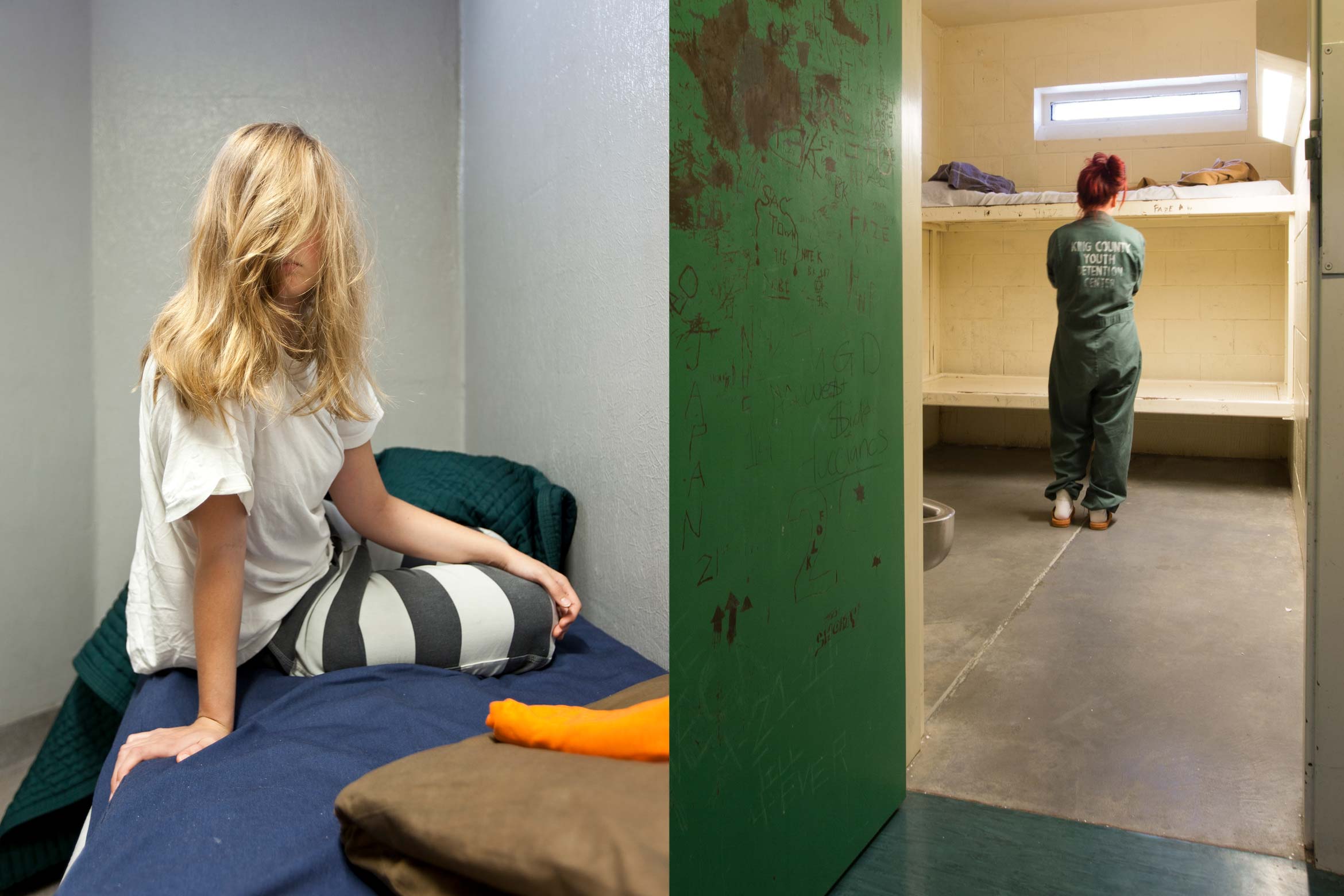Perched on a bed that consists of little more than a black metal frame and a thin mattress covered in blue cloth, a 13-year-old girl takes in her surroundings. The walls are grimy and bare. Her back is to the camera. “I have two more months in here,” she says. “I’m in for VOP [violation of parole]. My mom visits, but my dad is locked up at Sing Sing.”
Meanwhile, E.E., 12 years old when she landed in the system for the first time, is now 13 and has been in juvenile detention five times. When not detained, she lives with her mother and sister. She hasn’t seen her father since she was 2.
And in yet another facility, 16-year-old T. crouches in the dirt inside a small animal pen. He cuddles a rabbit to his chest. With his legs outstretched, he barely fits the diameter of the space. He gazes down at the animal, gently holding it against his orange jumpsuit, stroking its ear with his thumb and forefinger.
T. is on his second go-around in juvenile detention, locked up for running away, breaking and entering, and burglary. With no one looking after him, T. found ways to fend for himself.
If pictures speak louder than words, Richard Ross’s images of these and other adolescent and teenage kids ensnared in the country’s juvenile justice systems are nothing softer than a roar.
Artist, activist and distinguished research professor of art, Ross is the creator of the award-winning “–In Justice” series, which includes three published volumes and a traveling exhibition. “Juvenile in Justice” documents the placement and treatment of adolescents and teenagers in facilities across the United States that are meant to assist, confine and/or punish them. “Girls in Justice” explores the stark reality of girls — ranging in age from 11 to 18 — remanded to detention centers. Most are there for low-level crimes — simple assault; public disorder; property, drug or status offenses; or technical violations — and nearly 75% are victims of physical and sexual violence. “Juvie Talk: Unlocking the Language of Juvenile Justice,” the third book in the series,” uses the teens’ and adolescents’ own words and vernacular — including those of T. and E.E. — to share what is true about their lives in juvenile placement centers. The next volume in the series, “First Arrests,” is forthcoming in spring 2024.

Ross’s ultimate goal has been to change legislation and, by extension, improve the lives of system-involved children. “My greatest achievement with this work,” he said, “is that I have been able to impact their outcomes. I have been able to move the needle a fraction of a degree. That’s landmark. It’s unimaginable for an artist to think they can do that. It speaks to the power of art.”
Ross has accomplished this by talking to the kids themselves. “I put their images together with their voices and I make a compelling case for who they are and the mitigating circumstances of their lives,” Ross continued. “And I put it into a world where people have to pay attention and they have to believe it. This is not AI. You can’t fake the words of these kids.”
Ross’s work requires a blend of artistic vision, sensitivity and a high degree of emotional intelligence, all of which he honed over decades interviewing and documenting more than 1,000 of these young people. His work has taken him to over 400 sites and 35 states. Given the sheer number of detention centers he has visited, as well as the number of residents he has interviewed, Ross has a rare perspective on the lives and histories of the teens and adolescents he has photographed. He also has become a conduit between them and the world, giving voice to kids who otherwise have no way to be heard. And the majority of those he has queried have been willing to talk.
Most creative work has its DNA in something else, and Ross’s “–In Justice” series is rooted in his “Architecture of Authority” project. Published in 2007 by Aperture Press, “Architecture of Authority” presents unsettling images of architectural spaces that are designed to exert power over the individuals within them. Among the spaces are churches, mosques, civic areas, the Iraqi National Assembly Hall, an interrogation room at Guantánamo, Abu Ghraib, Angola State Prison Lethal Injection Chamber and a UC Santa Barbara lecture hall.




